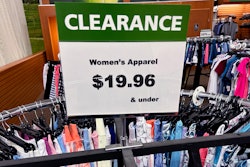WASHINGTON (AP) — U.S. industrial production likely rose only modestly in December, capping a slow year at American factories that weighed on economic growth.
Economists are predicting that industrial production increased 0.2 percent in December from November, according to a survey by FactSet. The Federal Reserve will release the report at 9:15 a.m. EST Wednesday.
In November, industrial production rose 1.1 percent. Factory output, the most important component, also was up 1.1 percent. But that was mostly because factories were rebounding from a steep decline in October caused by Superstorm Sandy.
For most of 2012, factories have struggled. Many have been hurt by a slowdown in consumer spending and weaker global growth that has dampened demand for U.S. exports.
One exception was U.S. auto companies, which boosted production sharply last year to meet the best sales since 2007.
Analysts are forecasting that Americans will boost car purchases even more in 2013. Polk, a research firm, is projecting auto sales of 15.3 million in 2013, up from 14.5 million in 2012. Auto sales had fallen in 2009 to the lowest level in more than 30 years.
There have been a few other encouraging signs that factories may be slowing recovering from their slump.
The Institute for Supply Management closely watched index of manufacturing activity rose to a level that signaled growth in December. And manufacturers added 25,000 jobs last month — the best hiring spree for the sector since May.
Economists believe manufacturing could also get a boost from stronger business investment, provided that Congress raises the federal borrowing limit without a fight that damages business confidence. Companies are sitting on large amounts of cash and analysts believe they are poised to start spending on computers, industrial machinery and other equipment to expand and modernize their operations.
The overall economy grew at an annual rate of 3.1 percent in the July-September quarter. But analysts believe activity slowed considerably in the October-December quarter to a rate below 2 percent or less, in part because companies cut back on restocking.
Less restocking leads to slower factory production, which weighs on economic growth.






















